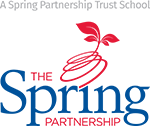Our Learning in Spring Term 2
Spring Term 2
We have a very busy term ahead of us in Year 6 packed full of new skills, new challenges and new knowledge. Take a look below to see exactly what we will be getting up to.
English
Drawing on our ‘Power of Reading’ text (Cosmic) this half term we will be focusing on developing a number of key skills. With regards to reading, we will be strengthening our deduction and inference skills, making us highly competent readers. As well as this, we will be developing our understanding of the language choices that the author makes, the reasons behind such choices and the impact that they have on the reader. Aside from our reading skills, we will also be improving our writing style by producing a range of text types: persuasive advert, narrative, information text and balanced argument. Within our writing lessons, we will be striving to further develop as writers by exploring different clause structures, experimenting with a range of conjunctions to link sentences and paragraphs, broadening our vocabulary choices and using a wide range of punctuation.
Maths
In maths, we will be participating in a number of activities in order to develop a stronger understanding of a range of mathematical topics. This half term we will be looking closely at units of measure and developing our understanding of how we can convert between units using specific methods. Within this area of maths, we will not only be strengthening our fluency, but we will also be developing our ability to solve a range of multi-step word problems. As well as this area of maths, we will be spending some time on the topic of perimeter, area and volume. During these lessons, we will be developing and using formulas to help us with each process and will be consolidating our division and multiplication skills. To finish the half term off, we will be looking closely at ratio and within this participating in a number of kinaesthetic activities in order to secure our understanding.
Science
In science this term, we will be focusing on the topic: ‘Light’. We will be using the outdoor environment as a great teaching tool to learn about a range of light sources. In addition to this, we will also be identifying how light travels and how it enables us to see in hands on lessons. Not only will we be developing our scientific knowledge through these methods, but we will also be putting on our lab coats and science googles and exploring the concept of reflection, refraction and shadows through a number of interesting and engaging scientific experiments. One big scientific question that we are really looking forward to discovering the answer to is ‘what colour is light?’ We can’t wait to put Sir Isaac Newton’s theory into practice and find out!
History and Geography
We are extremely excited about our topic for this half term. We will be focusing on the topic: ‘The Titanic.’ Within this topic we will be exploring the key events from the development of the Titanic to its last voyage and then we will be putting the events into chronological order on a timeline. As well as this, we will also be gaining an understanding of the fateful night the Titanic sunk, the geographical journey that it took, the passengers and staff who were on board and the rescue efforts. Once we have acquired this valuable information, we will then be using our writing skills to develop a newspaper report based on the sinking of the Titanic.
Art
In art this half term we will be exploring the famous artist: ‘Pablo Picasso.’ To start with we will be exploring him as an artist, the artistic choices that he has made and the types of artwork that he has produced. After this, we will then be channelling our ‘inner Picasso’ to produce our own version of ‘The Rooster’ which was produced in 1938. We will bring our artwork to life using a range of materials, including chalk. Once we have completed this art project, we will then be drawing inspiration from Picasso’s distorted face paintings. Drawing on the medium of photography we will be taking a picture of our own faces and then experimenting with moving our facial features around.





